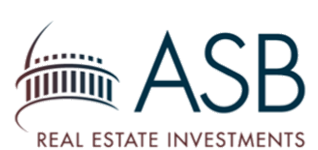SEPTEMBER 9, 2021
Factors Improving the Outlook for Commercial Property Markets
The following report is the first in a series from ASB that discusses the Outlook for Commercial Property Markets.
Authors:
Larry Braithwaite, Senior Vice President and Portfolio Manager
Cassidy Toth, Head of Research
Core real estate investors are dramatically increasing return expectations into the double digits for full-year 2021 as actual performance so far in the year significantly exceeds prior forecasts. Investment managers and researchers surveyed in early 2021 by the Pension Real Estate Association (PREA) had predicted unlevered core real estate would produce a 4.7% return in 2021, but already in the first six months of the year the NPI unlevered core index delivered a 4.9% return. If this recovery continues on pace, economic momentum is likely to energize real estate returns well above long-term averages.
For the three-year period following the 1990, 2001, and 2008 recessions, the NFI-ODCE core fund index generated an annual return of approximately 14% per year. While the ongoing rebound in real estate returns may not be as robust as after the prior three recessions, current data indicates that core real estate returns are likely to rise well above long-term averages at least over the next few years. In a series of reports over the next month ASB will analyze and assess the outlook for real estate investment, focusing first on the economy and capital markets and then looking more in depth at various sectors and subsectors, including multifamily, industrial, office/retail, lab sciences and cold storage. In particular, these reports will highlight new trends influencing tenant demand and investor preferences.
The Economy has Legs
Strong economic tailwinds—including a rapid labor market recovery and impressive wage growth—have helped stabilize many American families and propelled property markets in 2021. At the same time, a 17.9% surge in home values during the pandemic coupled with strong stock market performance has padded household balance sheets.1 Consumer spending has rebounded well above pre-pandemic levels, aided by $2.8 trillion in direct stimulus to families and almost $2.4 trillion in excess household savings, a result of a 33.8% savings rate during the pandemic.2, 3 In response to a tight, undersupplied housing market, S&P Global projects housing starts to spike to a 15-year high in 2021, which will undoubtedly create a significant multiplier effect throughout the economy. The $1 trillion infrastructure bill recently passed by the Senate could facilitate critical investment in roads, internet and public infrastructure over a number of years while the Fed has assured investors that it will accommodate temporarily elevated inflation at least through 2023, so as not to disrupt the recovery. All of these economic forces are projected to drive robust GDP growth between 6% and 8% in 2021, the highest GDP growth in nearly 40 years, and likely to carry over elevated growth through at least 2022. These conditions underscore the strong and improved performance outlook for real estate over the next several years.
Optimism Returns to the Capital Markets
A number of technical factors have combined to significantly increase real estate capital flows, particularly into choice sectors like industrial that benefited from pandemic-related momentum. Early in the pandemic, a significant correction in public equities put selling pressure on private real estate to rebalance portfolio allocations. However, this pressure reversed as the stock market rallied in the second half to record territory into 2021. Investors who had pulled back from new private real estate investments to focus on asset management triage quickly found themselves playing catch up. As the pandemic’s longer-term impact on everyday life became clearer, investors began to focus on growth real estate subsectors like logistics, suburban apartments, self-storage and lab buildings, which look like long-term beneficiaries of growing tenant demand emerging from the pandemic. The current low interest rate environment coupled with pent up demand and supply chain dislocation driving higher inflation has increased capital appetites for real estate as an inflation hedge and a more attractive alternative to bonds.
Throughout 2021, many investors sat on the sidelines. As a result, as of the Spring 2021, more than $240 billion of equity capital allocated to real estate was uninvested, a record high for the fifth year in a row.4 With so much debt and equity capital seeking a home in targeted real estate subsectors amid pent-up consumer demand and favorable economic conditions, first half real estate returns and the near-term performance outlook have strengthened considerably. From a core real estate perspective, the first half of 2021 represented the strongest half of performance since first half 2015, based on returns from the NFI-ODCE index.
Certain Risk Remains
Despite strong economic indicators and the favorable property market outlook, investors should closely monitor certain risks. Although current elevated inflation is expected to last only temporarily until pent-up demand eases and supply chain dislocation moderates, the Fed could be forced into a contractionary monetary policy, weighing down the economy, if inflation persists. In addition, the recent proliferation of the Covid Delta variant could derail re-openings throughout the county and undermine economic recovery. Traffic softened at grocery stores, gas stations, gyms, restaurants and retail stores in July 2021, when news of the Delta variant became widespread and the CDC reversed course on mask guidance in response. Although the Delta variant will impact cities differently depending on vaccination rates, experts project a low likelihood of a return to the most restrictive lock-downs experienced in the Spring of 2020.
The New Normal
The pandemic promises to leave an indelible mark on American life. Changes to our national priorities and the way that we work, socialize and spend will influence tenant demand and impact real estate capital markets across asset classes. And in many ways the pandemic has accelerated trends already in place. When it comes to investor and tenant demand for alternative real estate subsectors, this is certainly true. Steadily declining interest rates amid robust capital formation over the past several decades has driven a contraction in investment yields as investors have more capital to deploy than investment opportunities. This has caused much greater efficiency in private real estate markets as capital finds its way into secondary and tertiary markets as well as niche real estate subsectors in search of more attractive risk-adjusted returns. In 2021, pension allocations to niche sectors including life sciences, single-family rentals, data centers, senior housing and cold-storage warehouses accounted for 30% of new commitments, up from 17% in 2020.5 In the past, investors avoided real estate subsectors with specialized operations as too risky. Today, they are leaning into new sectors, like self-storage, where NOI volatility has proven to be modest during market downturns, particularly during the pandemic.
In following reports, we will explore the new dynamics that are shaping tenant demand and analyze how investors are positioning to take advantage, including looking at attractive niche subsectors.
Next Week: A Sudden Rebound in Apartments
1 S&P/Case-Shiller Home Price Indices. Data is seasonally adjusted and compares the national index May 2021 to February 2020.
2 Bureau of Economic Analysis, Table 2.6. Personal Income and Its Disposition, Monthly.
3 Bovino, B. A., & Panday, S. (2021, June 24). Economic Outlook U.S. Q3 2021: Sun, Sun, Sun, Here It Comes. Read the full article.
4 Source: Real Estate Alert. (2021, March 17). Fundraising Surges Even as Dry Powder Stacks Higher. Note: Data is for high-yield real estate funds.
5 Source: Real Estate Alert. (2021, August 4). Midyear Pension Pledge Reach Six-Year High. Note: Data is for high-yield real estate funds.
Download to view full report and graphics

